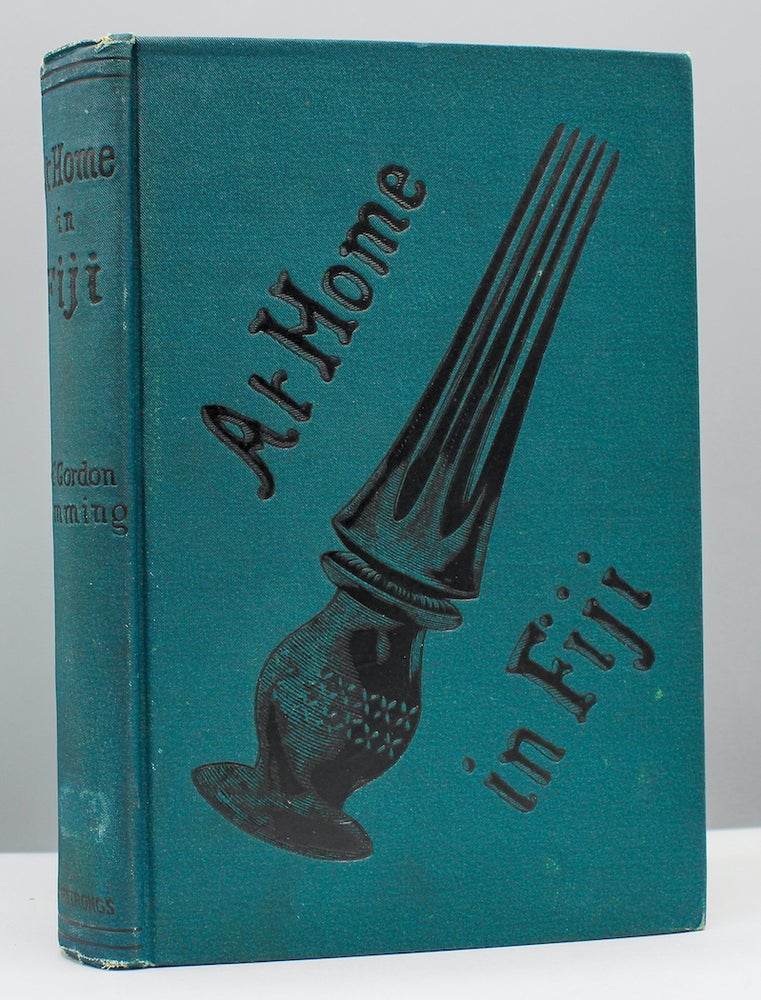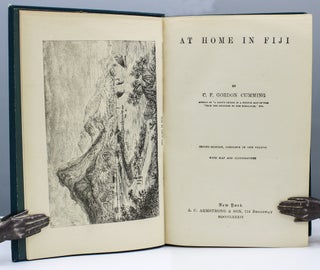At Home in Fiji.
New York: A.C. Armstrong and Sons, 1889. Later edition. The first edition was published in a two-volume set in Edinburgh in 1881. The title-page of the present item states that it is the second edition, though it seems that several earlier single-volume editions, published in both New York and Edinburgh, are stated on their title-pages to be the second edition. With four plates from the author’s own illustrations of Fiji and a fold-out map (11” by 7 ”). Very minor rubbing to extremities. Blue-green endpapers. A bright, attractive, near-fine copy, uncommon in this condition, of this account of British life in the first years of the Colony of Fiji. Publisher’s blue-green cloth stamped in black with image of a “cannibal fork” on both coveres. Octavo. x, [2], 365, [8, ads] pp. Item #16798
Constance Frederica Gordon Cumming (1837 – 1924) was a skilled landscape painter and author of over two dozen travel books. At Home in Fiji recounts her 1875 voyage into Fiji with Sir Alfred Hamilton-Gordon (no relation) and his wife, Rachel Emily, so Hamilton-Gordon could accept the governorship of the Colony of Fiji. When the first governor of the Colony of Fiji left the role after eight months, Hamilton-Gordon became the governor and held the position until 1880, Along with her voyage to the island with Hamilton-Gordon and Lady Gordon, the present work also documents Cumming’s extensive traveling in and around Fiji until August 1877. She records the language, dress, religion and ritual, art, and architecture she encountered, as well as her travels with missionaries in Fiji. A note at the beginning of the work explains the “cannibal fork” pictured on the covers and additionally details particular vegetables that would accompany meals of human flesh. In Polynesia: The Mark and Carolyn Blackburn Collection of Polynesian Art, Adrienne L. Kaeppler explains that the forks, locally called cula ni bokola, were used for ceremonies in which priests and chiefs ate human flesh. The forks were additionally used by high-ranking people who were considered too holy to come into contact with food in general.
Kaeppler. Polynesia: The Mark and Carolyn Blackburn Collection of Polynesian Art (2010), p. 225.
Price: $200.00




